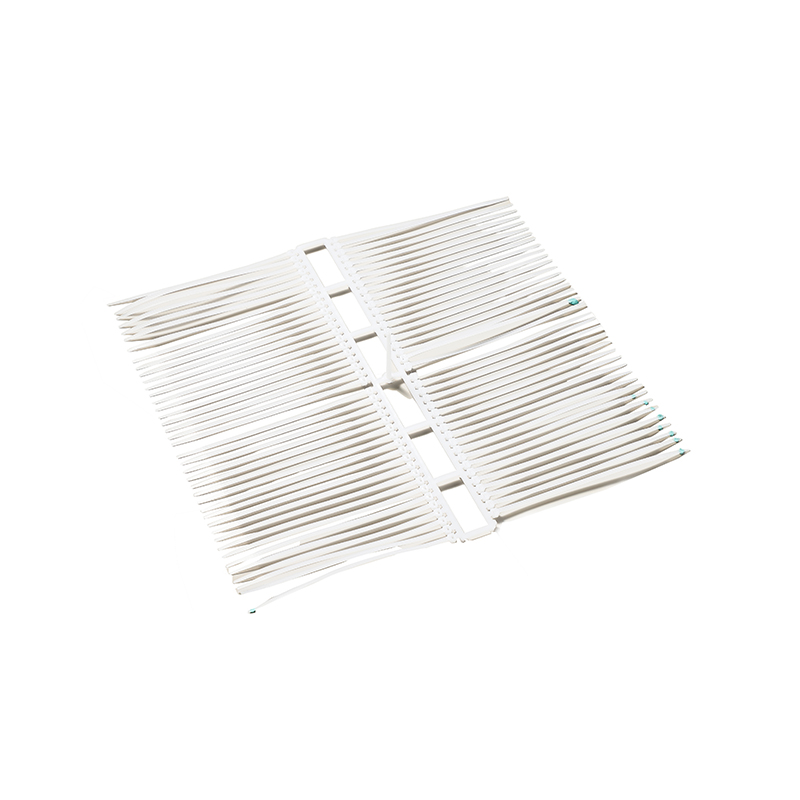 2025.07.18
2025.07.18
 News
News
Automotive cable ties must withstand harsh operating conditions, including temperature fluctuations, vibration, chemical exposure, and mechanical stress. Correspondingly, the molds used to produce these ties need to maintain high precision, durability, and thermal stability over long production cycles. Therefore, the materials chosen for automotive cable tie molds must combine strength, wear resistance, and thermal conductivity, along with resistance to corrosion and deformation.

Primary Materials in Automotive Cable Tie Molds
1. Tool Steel
Tool steel is the backbone material for automotive cable tie molds. Its mechanical properties make it ideal for enduring the high pressures and temperatures of injection molding.
Common Grades:
P20 Steel: Widely used for mold bases and cavities due to its good machinability, toughness, and reasonable cost. It offers decent wear resistance and is often hardened to improve durability.
H13 Steel: A hot work tool steel with toughness, thermal fatigue resistance, and hardness. It is particularly suitable for molds exposed to higher temperatures or demanding cycles.
S136 Stainless Steel: This corrosion-resistant steel grade is used when molds require long-lasting polish and resistance to rust, often necessary when molding nylons or automotive-grade polymers.
Roles:
Tool steel forms the mold's core, cavity, inserts, and cores, defining the shape of the cable tie. Its wear resistance ensures consistent dimensional accuracy throughout extended production runs.
2. Copper Alloys
Copper and its alloys, such as beryllium copper, are sometimes incorporated in mold components to enhance heat dissipation.
Purpose:
Copper alloys have thermal conductivity, which helps reduce cooling time by efficiently transferring heat away from the molded part.
Application:
Often used in areas of the mold that require rapid cooling, such as cores or inserts, copper alloys improve cycle times and reduce warping or deformation of the cable ties.
3. Aluminum
While less common for high-volume automotive molds, aluminum is occasionally used for prototype or low-volume production molds.
Advantages:
Aluminum molds are lightweight, easier to machine, and offer good thermal conductivity.
Limitations:
Aluminum's lower hardness and wear resistance make it unsuitable for long-term production, especially in automotive applications where precision and durability are critical.
Surface Treatments and Coatings
The base materials are often enhanced with surface treatments or coatings to improve performance and extend mold life.
Nitriding:
This process diffuses nitrogen into the steel surface, increasing hardness and wear resistance without affecting the core toughness. It also improves resistance to corrosion and fatigue.
Polishing:
Highly polished mold cavities reduce friction during injection, resulting in smoother cable tie surfaces and easier part release. Polishing is critical for producing automotive cable ties with tight tolerances and aesthetic requirements.
Chrome Plating:
Applying a thin layer of hard chrome enhances surface hardness and corrosion resistance, particularly in areas subject to high wear or abrasion.
Mold Base and Structural Components
The mold base and supporting structures are generally made from robust steel alloys that provide the necessary rigidity and support during injection molding.
Material Selection:
High-grade carbon steel or alloy steels are common choices for mold bases. They are selected for mechanical strength and stability under repeated thermal cycling.
Importance:
A stable mold base maintains precise alignment of mold components, which is crucial for producing consistent automotive cable ties.
Considerations for Material Selection
Selecting the right materials for automotive cable tie molds involves balancing several factors:
Durability and Wear Resistance: Automotive molds undergo millions of cycles; materials must resist abrasion and fatigue to maintain accuracy.
Thermal Conductivity: Efficient heat management shortens cycle times and improves part quality. Materials with high thermal conductivity are preferred for cooling channels or inserts.